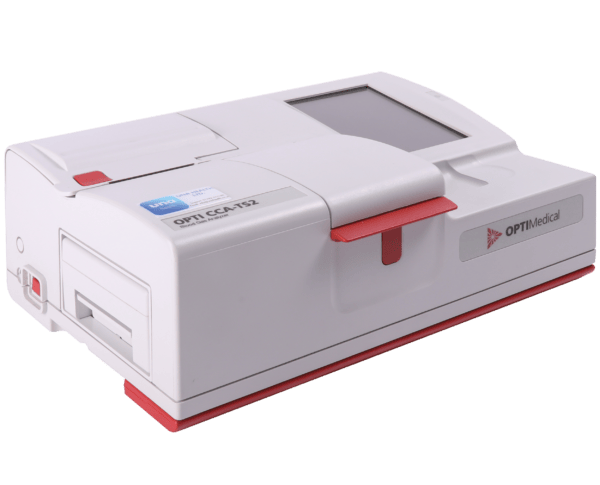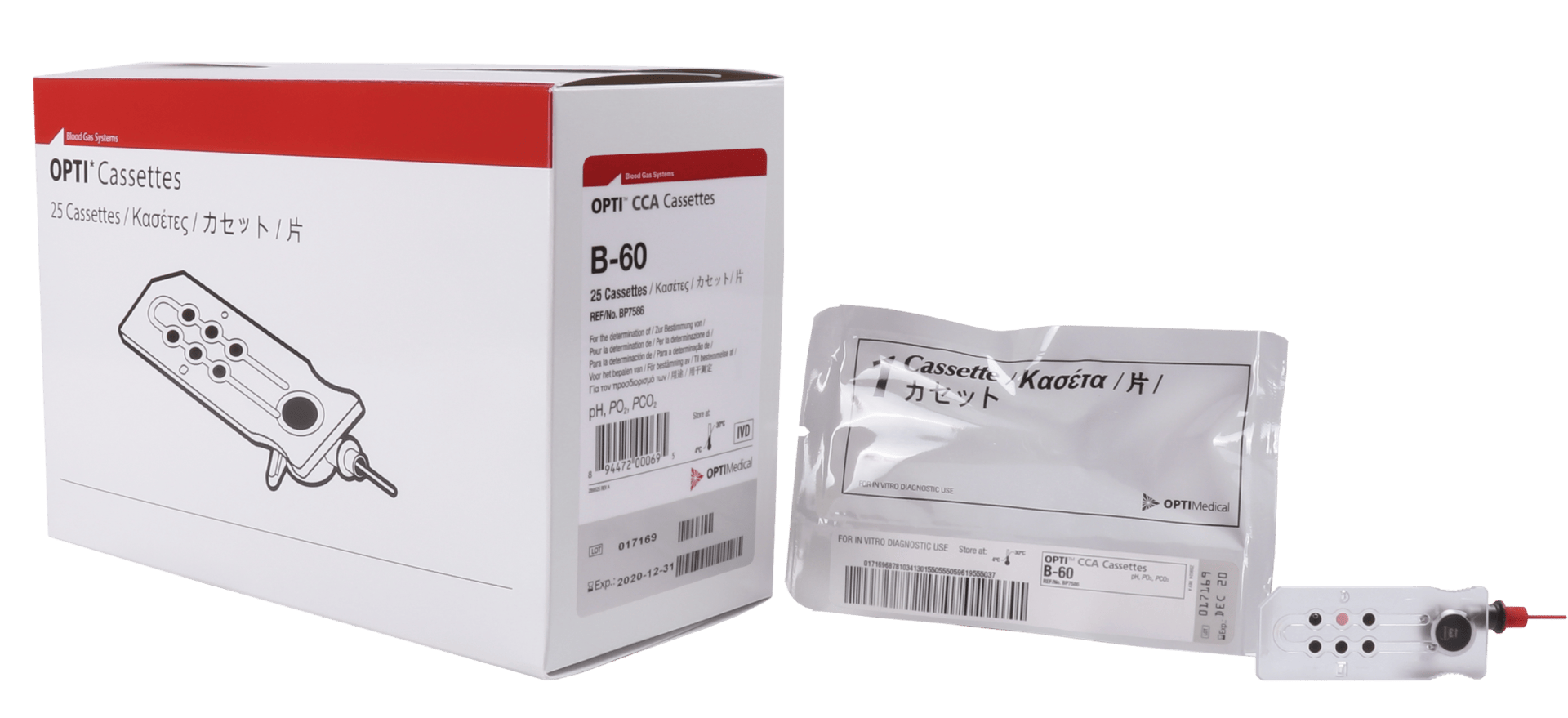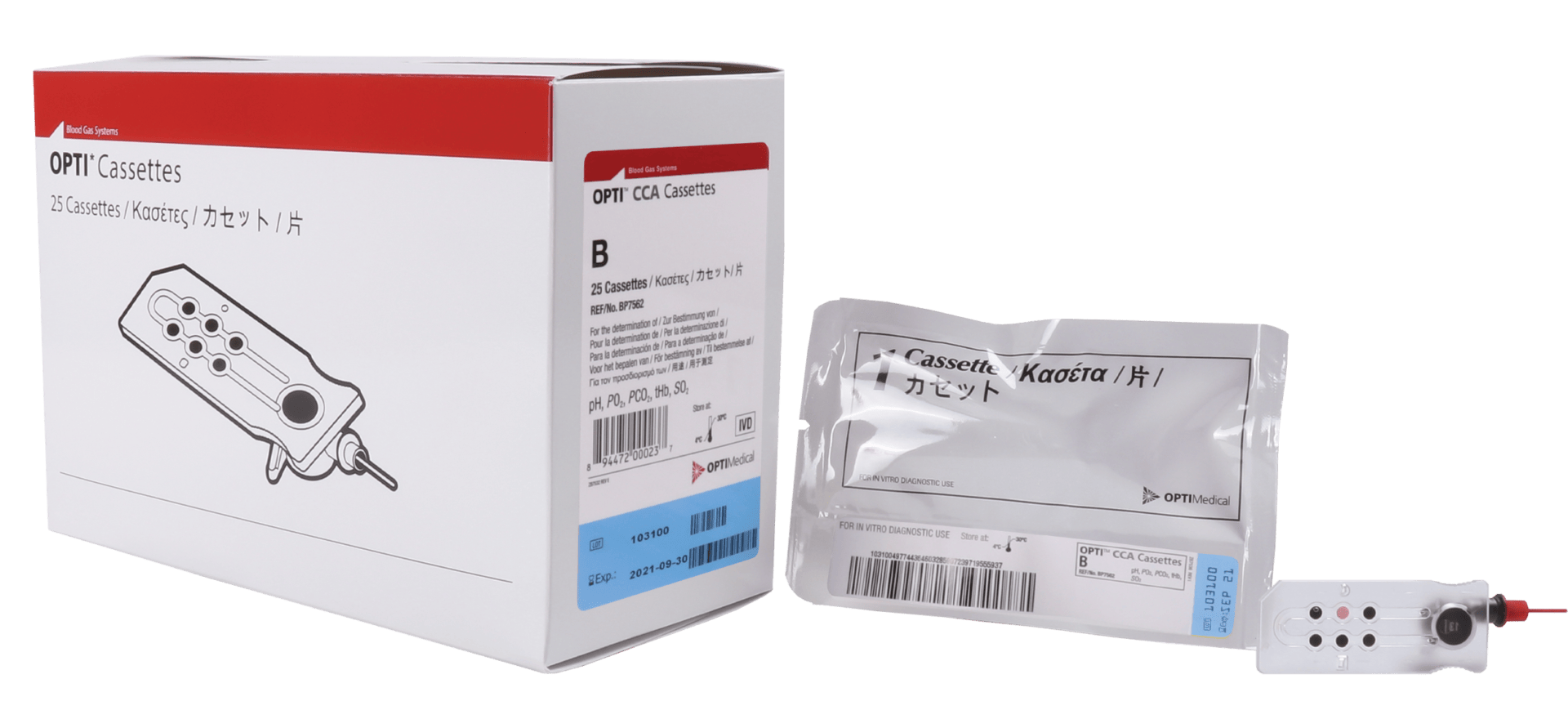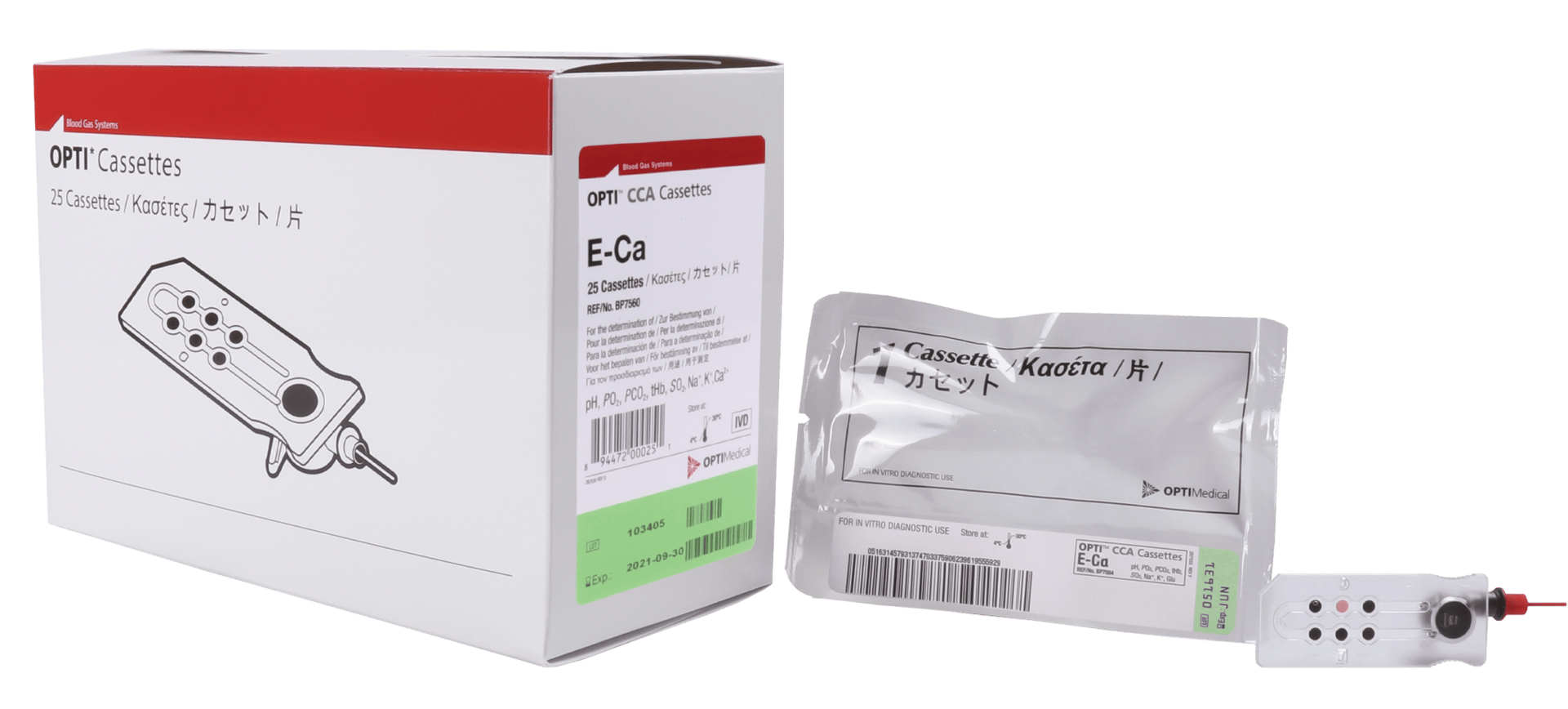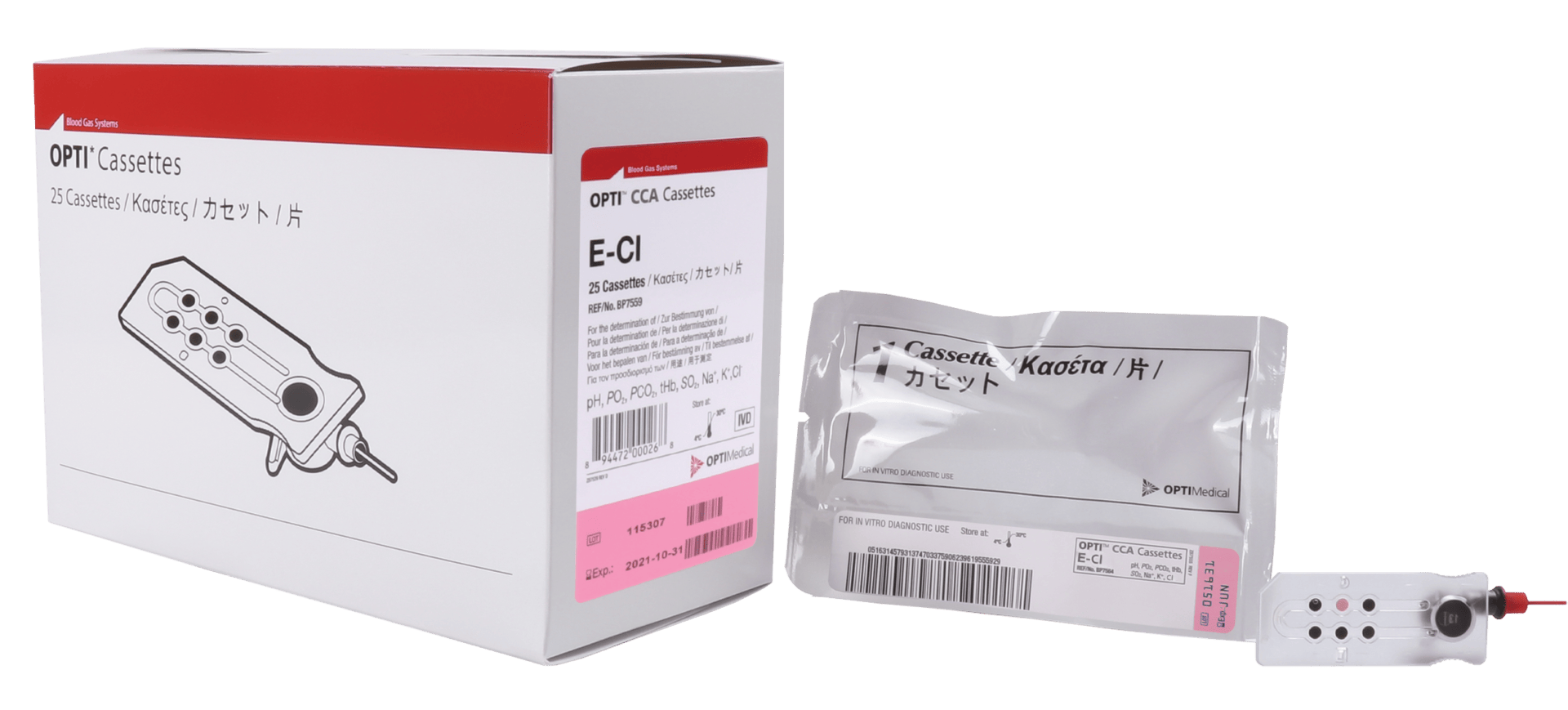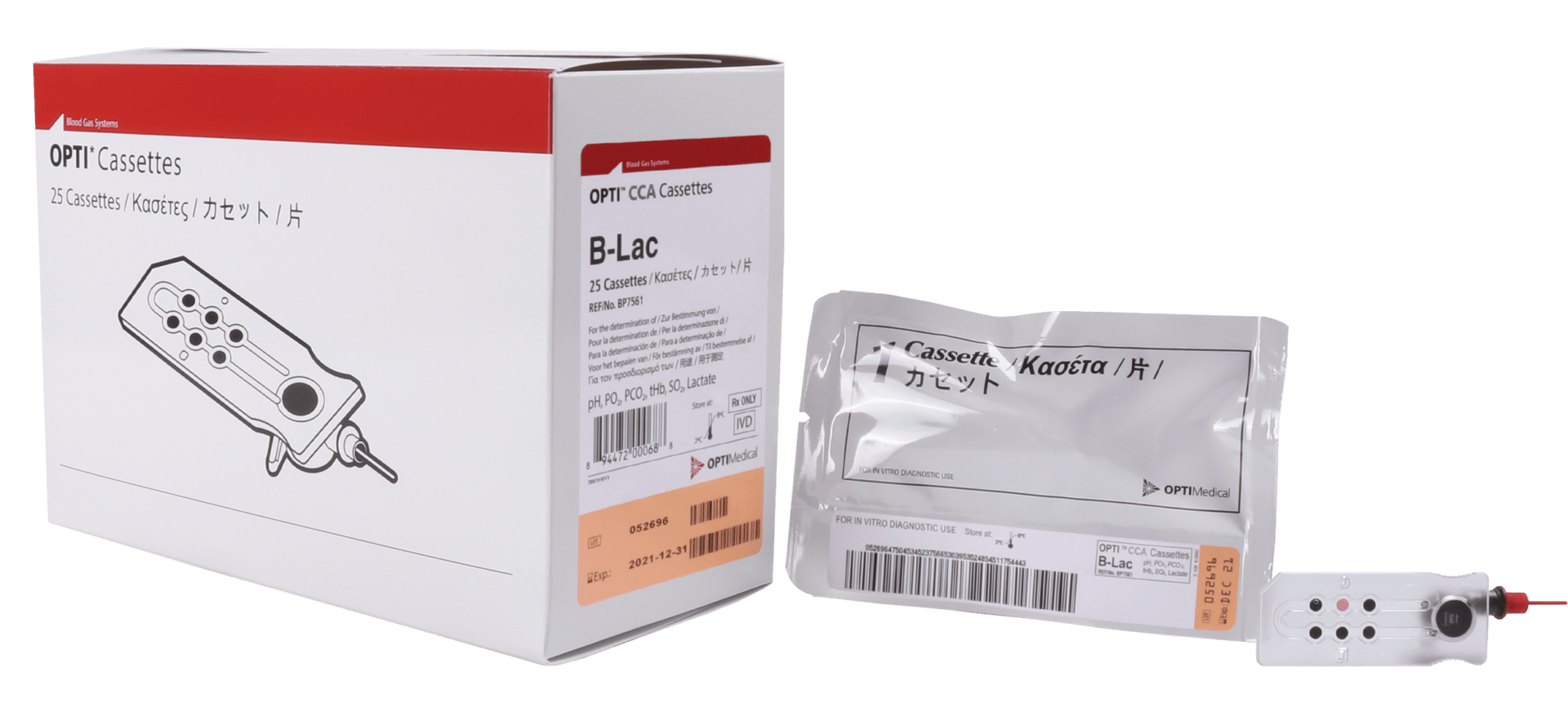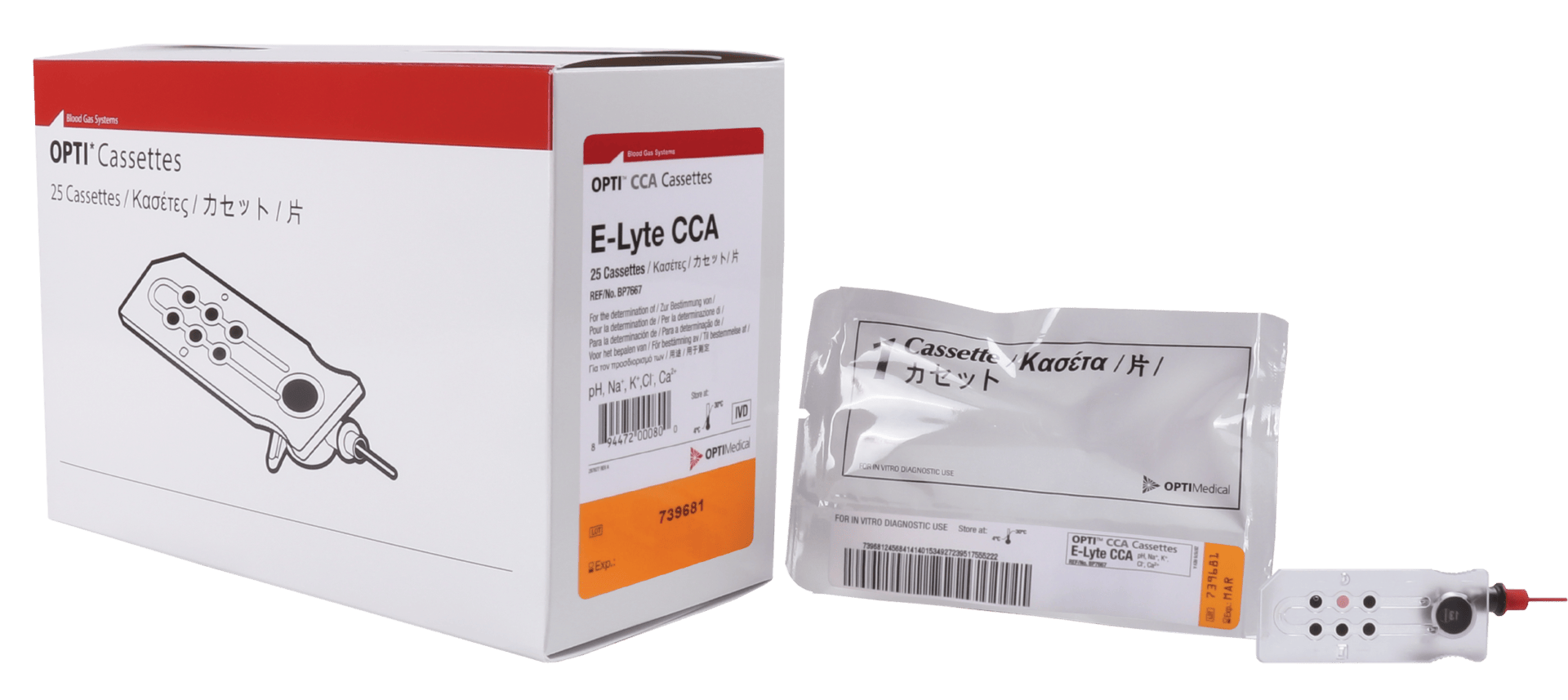OPTI Blood Gas Analyser
Improving patient pathways, outcomes and experience.
Optimise workflow and help reduce hospital admissions.
Enabling timely diagnosis, improving #patientflow and increasing workflow efficiency to help meet new targets. The OPTI analyser utilises innovative optical technology to ensure fast, accurate results for blood gases, acid-base balance, electrolytes, ionized calcium, glucose, BUN and lactate.
Product Overview
The next generation of blood gas analyser.
The OPTI CCA-TS2 Blood Gas and Electrolyte Analyser uses OPTI Medical’s optical fluorescence technology. This unique, patented technology does not use electrodes or contact points, which eliminates the need for costly electrode maintenance, providing highly accurate results in minutes, in any setting, from bench to bedside.
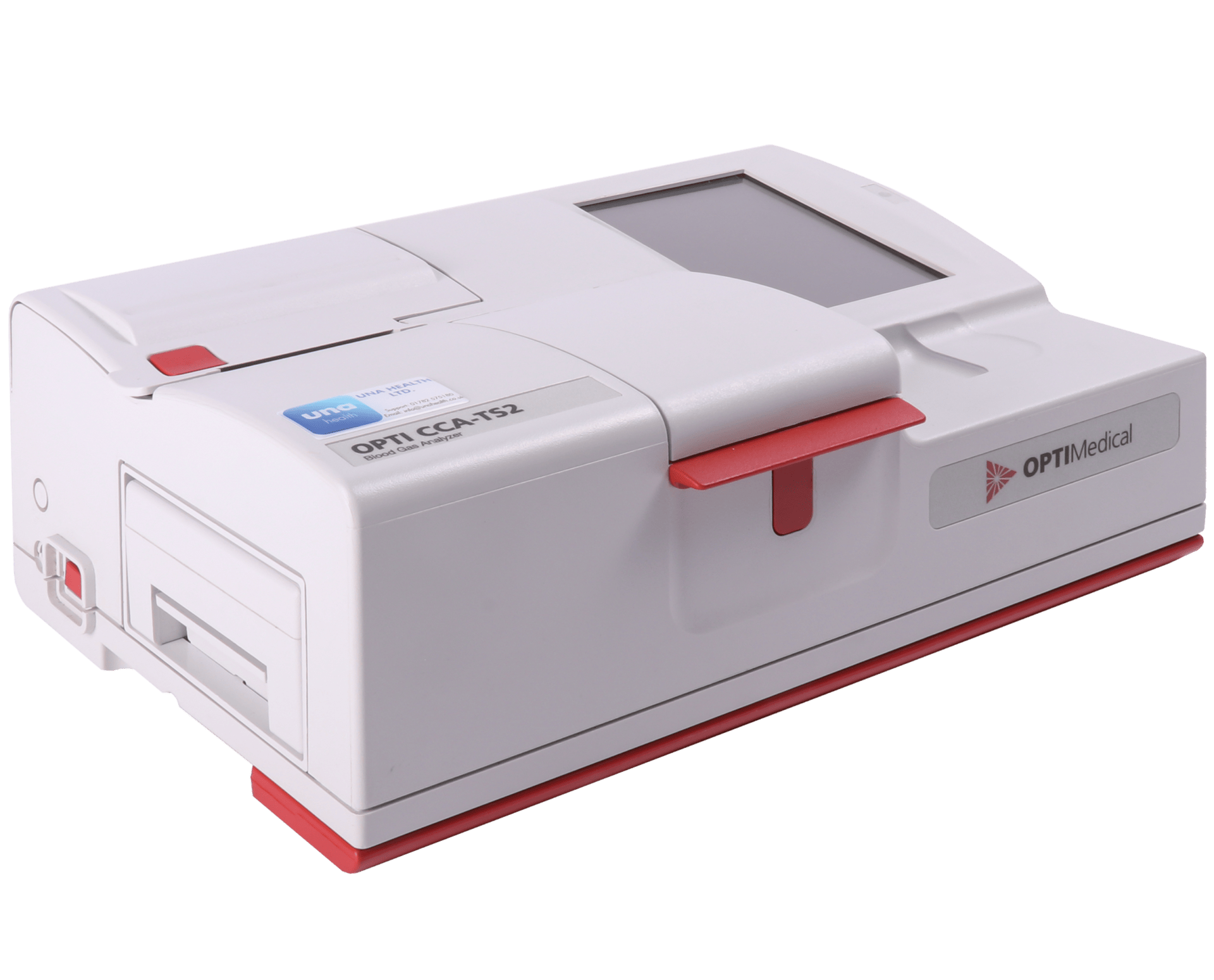
How the OPTI CCA-TS2 Analyser works
The OPTI CCA-TS2 Blood Gas and Electrolyte Analyser is a microprocessor-based instrument that measures optical fluorescence from discreet sensors called optical electrodes (optodes). A disposable, single-use cassette contains all of the elements needed for calibration, sample measurement and waste containment. Specific calibration information from the cassette is read into the analyser by swiping the cassette package through the bar-code reader. The cassette is then placed into the measurement chamber.
The analyser warms the cassette to 37.0°C/98.6°F, and it performs a calibration verification on the sensors for PCO2 and PO2 by passing a precision calibration gas mixture across the optode sensors (which eliminates losing sample if cassette calibration fails). The pH and electrolyte channels are calibrated with precision buffer solution contained in the cassette. When calibration is verified, the analyser aspirates the blood sample into the cassette and across the optode sensors. After equilibrating with the blood sample, fluorescence emission is then measured.
How the OPTI CCA-TS2 Analyser helps
To help meet exact testing needs, the OPTI CCA-TS2 analyser has a variety of cassette configurations available. The analyser uses OPTI Medical’s optical fluorescence technology, which is a unique, patented technology does not use electrodes or contact points and therefore eliminates the need for costly electrode maintenance.
Moving diagnostics closer to where the patient is not only saves time and the cost of lab testing, but also makes the process more convenient for the patient and more efficient for the clinician. The OPTI CCA-TS2 analyser provides lab-quality results with zero standby cost. The single-use consumable is only used during a measurement and safely locks waste inside.
Results vary depending on the cassette used but the analyser will also give calculated results for the following:
- Actual Bicarbonate (HCo3)
- Standard Bicarbonate (st.HCO3)
- Base Excess (BE)
- Base Excess Extra Cellular Fluid (BEecf),
- Base Excess, Actual (BEact)
- Buffer Base (BB)
- Standard pH (st. pH)
- Hydrogen Ion Conc. (cH+)
- Total CO2 (tCO2)
- Oxygen Saturation (SO2)
- Oxygen Content (O2 ct)
- Alveolar-arterial O2 Conc. (AaDO2)
- St. Ionized Calcium (pH=7.4) (nCa++)
- Hematocrit (Hct), P50
Most importantly, the OPTI® Portable Blood Gas Analyser Testing Equipment delivers a wide range of test results accurately, reliably and in minutes, to enable cost efficiency and improved patient care.
How to use the OPTI CCA-TS2 Analyser
The OPTI CCA-TS2 analyser is easy to run:
- The user-friendly touch screen, with simple menu navigation, can be used with minimal training.
- Automated sample aspiration reduces staff time and training.
- Heated measuring chamber allows for testing of iced samples.
Step 1
Scan the cassette bar code.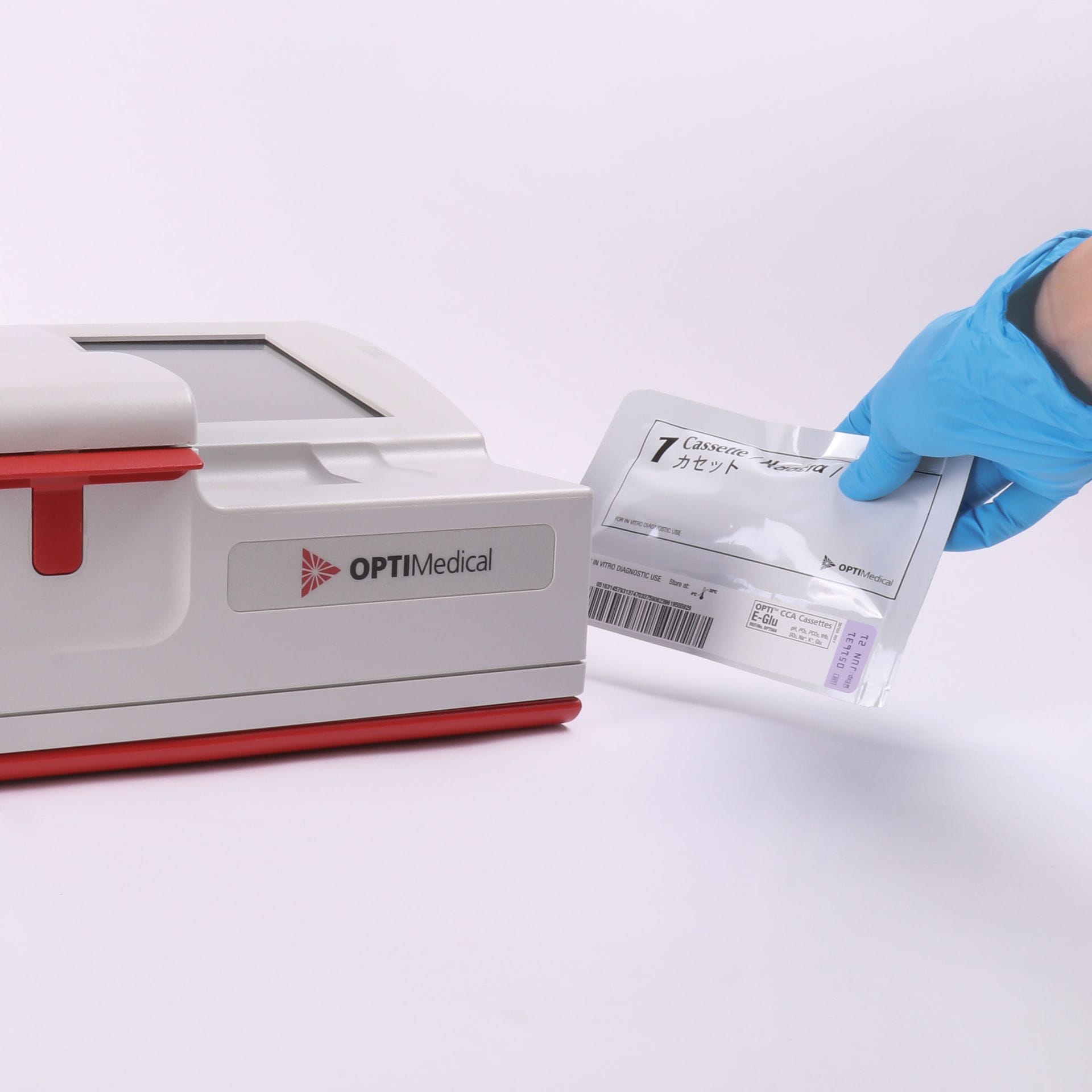
Step 2
Remove the cassette from its packaging. Wipe with a tissue to remove any moisture build-up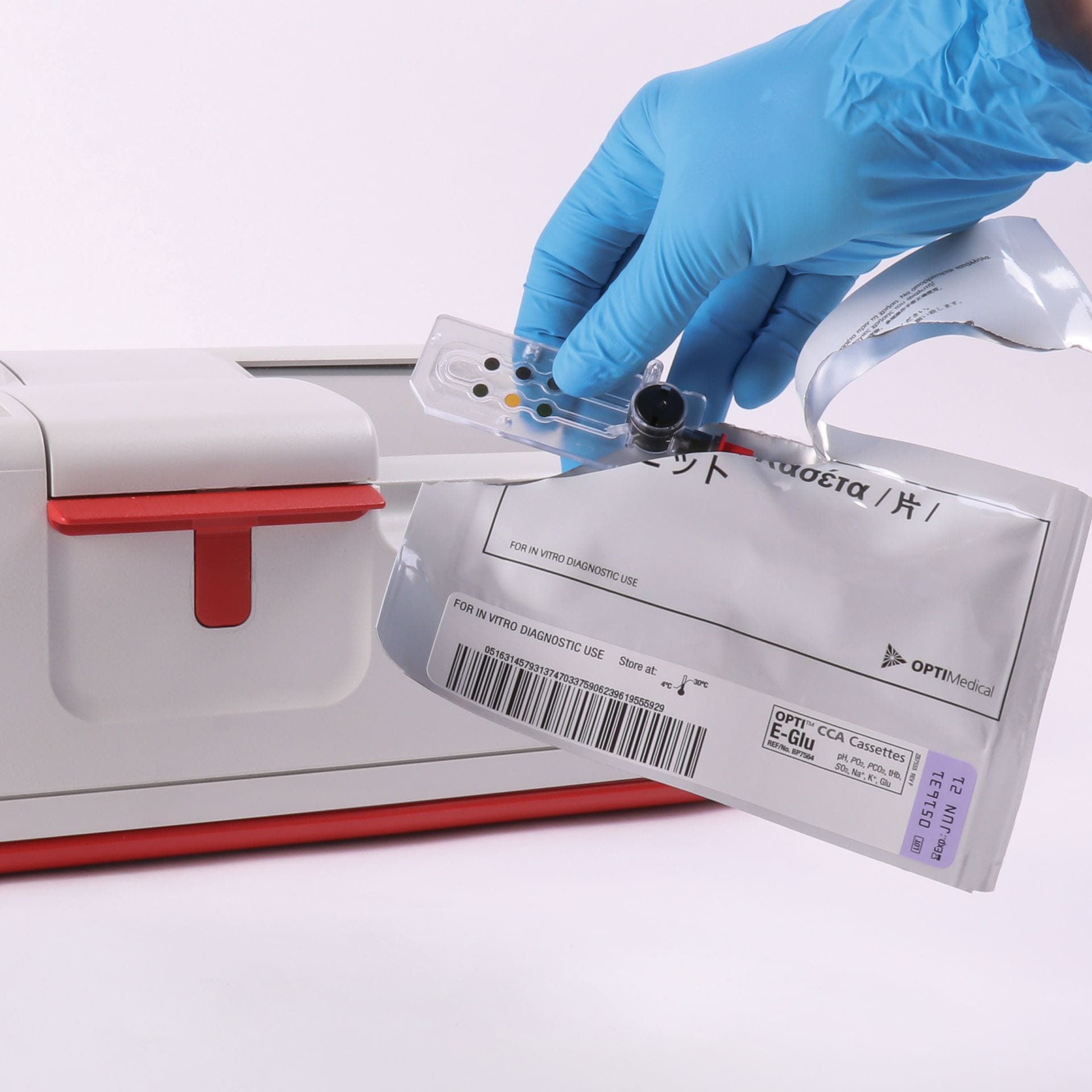
Step 3
Place the cassette into the sample measurement chamber and close the cover.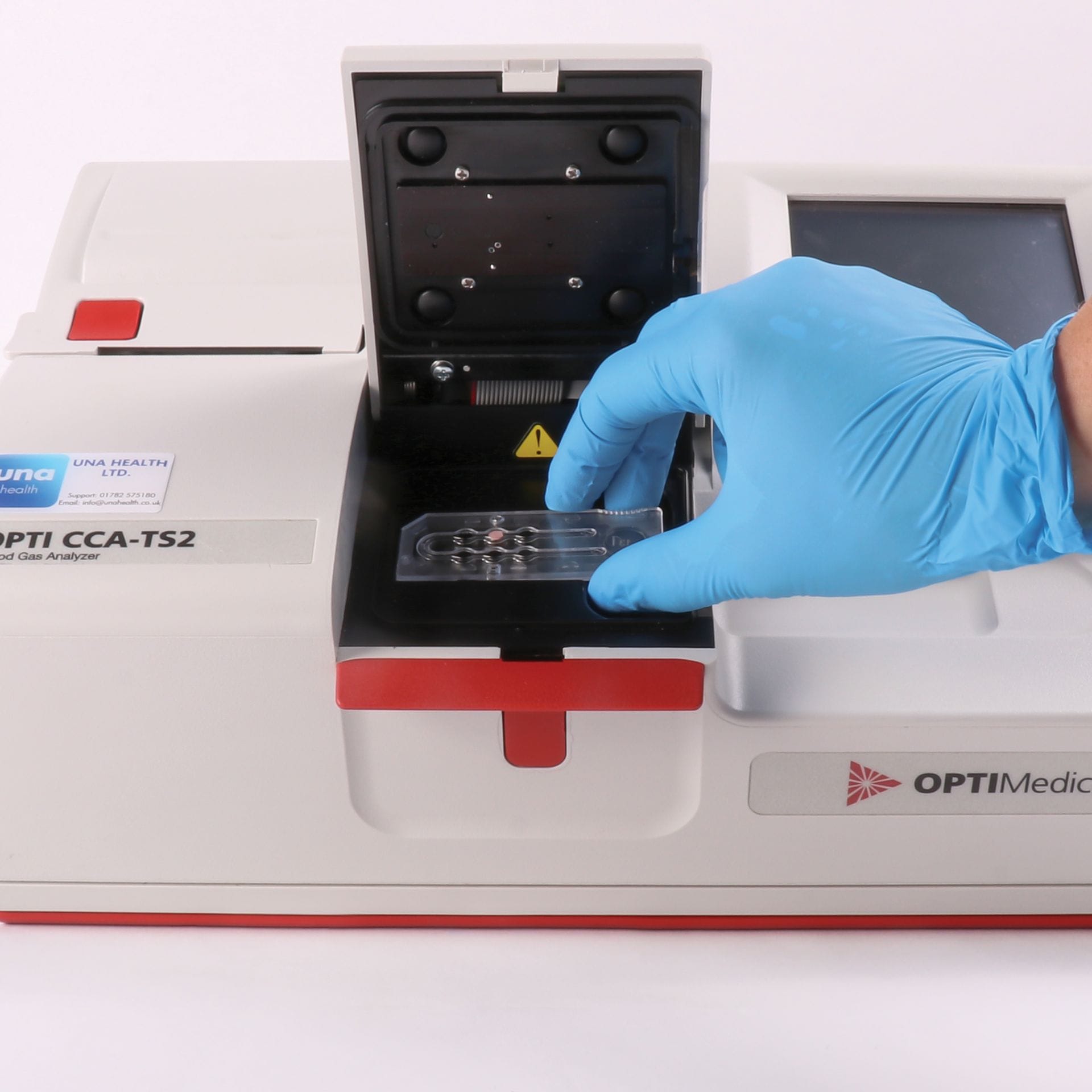
Step 4
Aspirate the sample. When sample aspiration and measurement is complete, the results will automatically appear on the screen.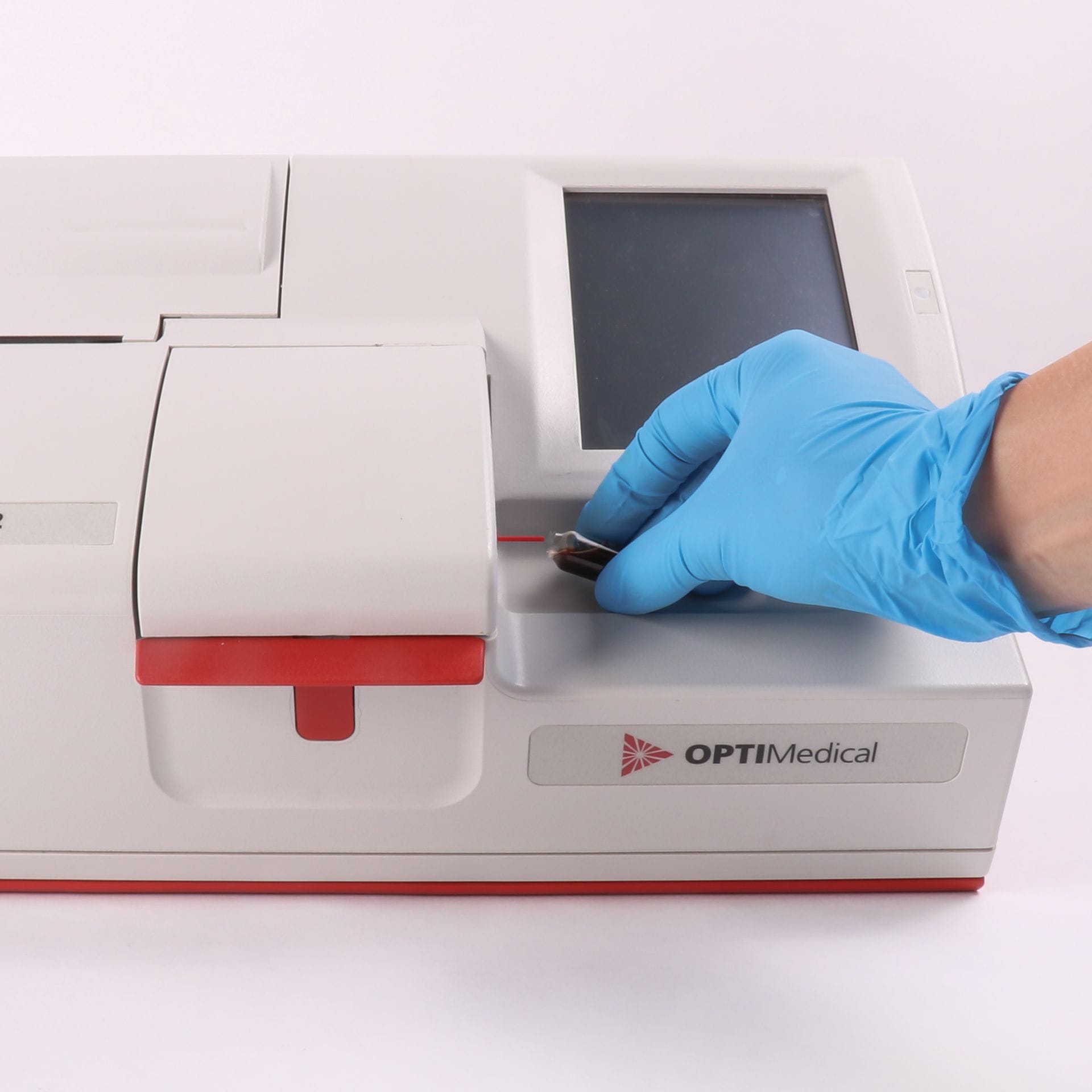
Downloads
No downloads found

